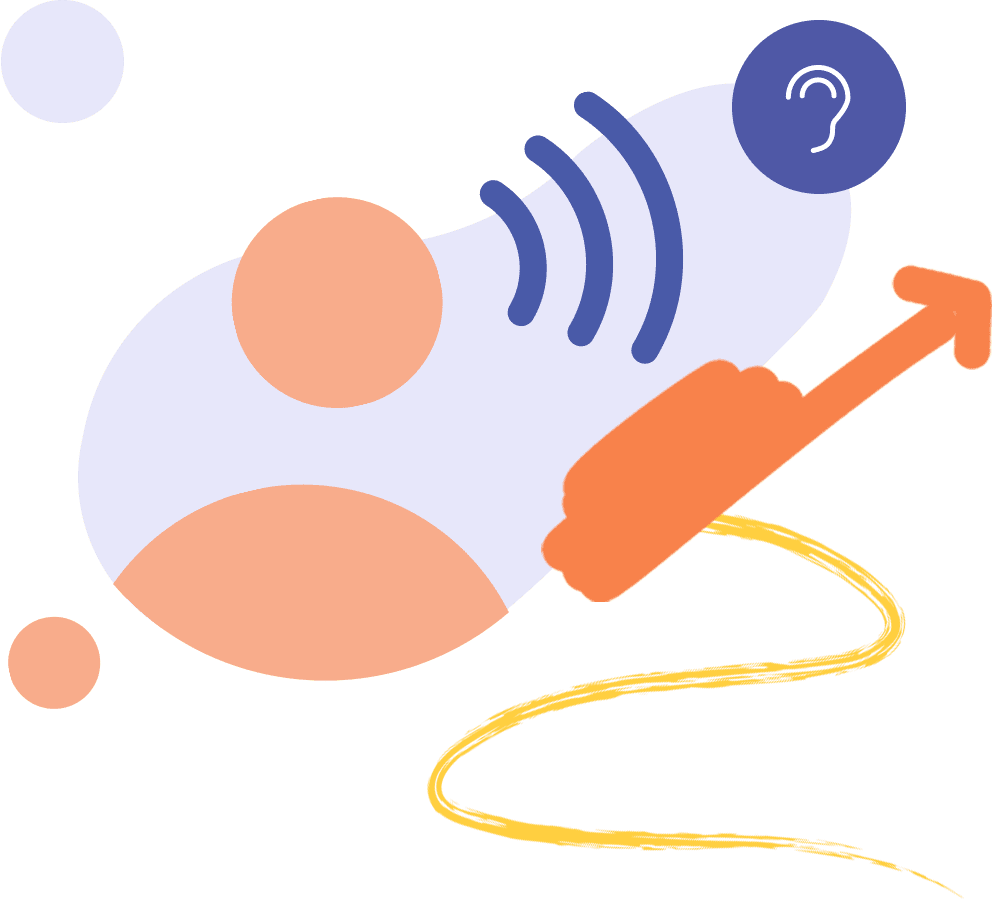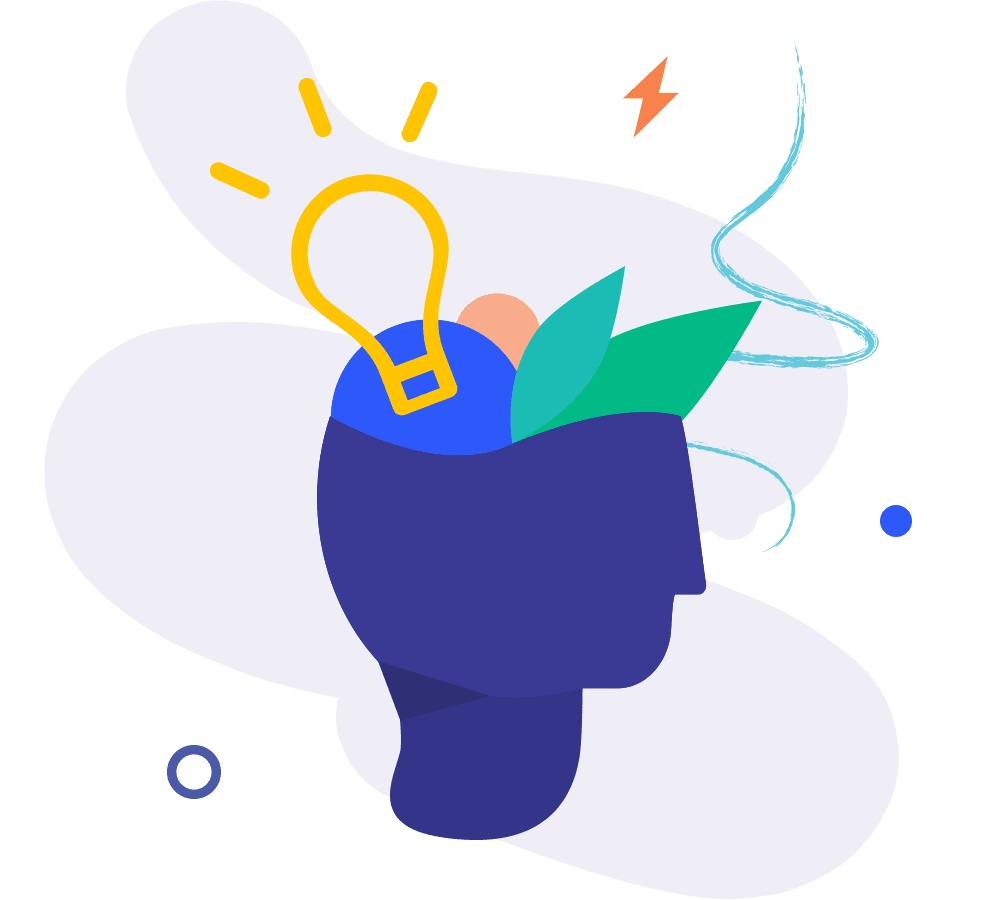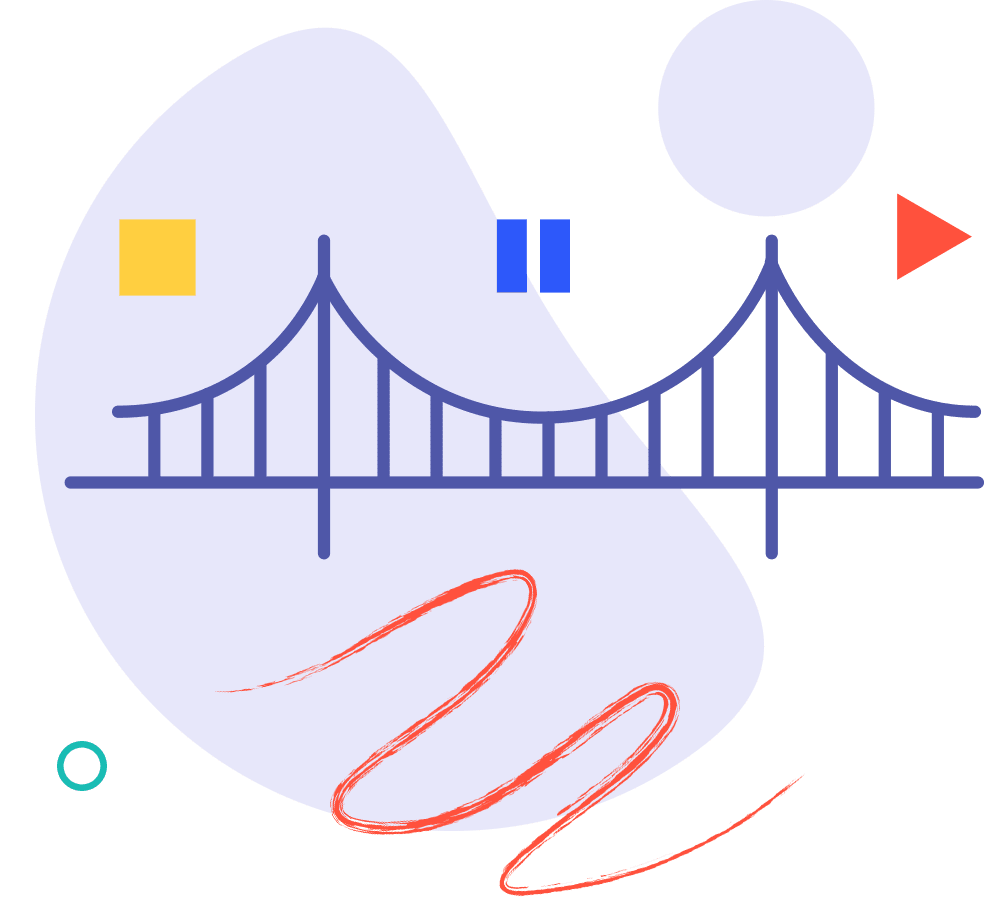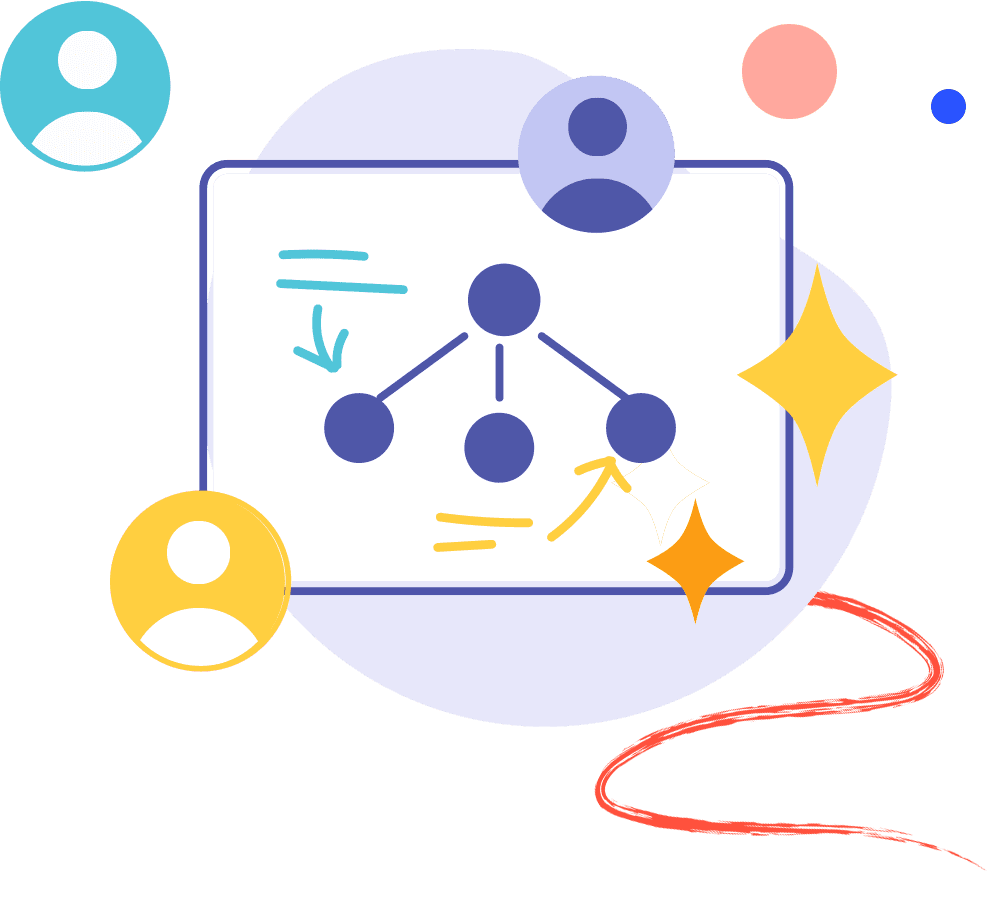Learning science and recordable digital whiteboards
The science is on our side! Put into practice what decades of research has suggested using Explain Everything Whiteboard. The research domains detailed below are meant to help you better understand how interactive digital whiteboards help achieve learning outcomes.
Mixing verbal with visual
People are more likely to understand learning materials when they can engage in the cognitive process of making mental connections between both pictorial and verbal representations.

Correct results increase by an average of 89% when graphics support words correctly.1
Students who receive narration generate 29% more solutions to a problem.6

Using visual metaphors
Illustrating procedures with supporting visual and verbal representations fosters learning, and visual metaphors can be used as effective aids to understanding. Whiteboards are designed to allow the use of multiple representations simultaneously.

Learning using multiple representations can increase scores by over 15% for students with high spatial abilities.7
Metaphors work best in the service of complex learning or problem-solving situations.
65% of novice learners and 95% of experts recognize the positive effect of metaphors in learning.8

Increasing learning with pretraining videos
At times, the lesson material is so complex that it would likely overwhelm a learner’s cognitive system if presented all at once. In such situations, it is helpful to do some of that processing in advance.

Sharing an explainer video as pre-training can lead to better learning results.
The positive effects of pre-training on learning have been confirmed by 13 of 16 studies, with a medium effect size of 0.75.9 The effect is strongest for low-knowledge learners.
Encouraging dialogue with drawings
Sketching, doodling, and adding hand-drawn elements to a digital whiteboard will inspire discussion and creativity. Research has found that natural lines and unsophisticated representations tend to trigger elaboration and ideation much better than rigid elements, such as bullet points.
The number of ideas shared can increase by up to 88% when low-perceived representations are used.10

Elaborative dialogue is welcomed across a range of situations, from learning to creating. Visually-facilitated exchanges can take advantage of this finding to encourage discourse around a knowledge unit…or discourage it, if need be!
Collaborating to approach complex tasks
Group work has the potential to improve learning outcomes, as the cognitive load is distributed amongst group members. Collaboration is especially useful when it is crucial that the cognitive benefit exceeds the mental cost of performing a task.

For high-complexity tasks, working collaboratively can improve scores by over 20%12
The overall positive effect size of cooperative instruction is d-.53 compared to individualistic instruction using various measures of student achievement.13 While low-complexity tasks are best handled solo, group work is by far the best for challenging problems!
References
- M1 Paavola S., Haakarainen K. (2005)) The Knowledge Creation Metaphor – An Emergent Epistemological Approach to Learning. Science & Education (2005) 14: 535–557 https://doi.org/10.1007/s11191-004-5157-0
- Mayer, Richard E.,Anderson, Richard B. The instructive animation: Helping students build connections between words and pictures in multimedia learning. Journal of Educational Psychology, Vol 84(4), Dec 1992, 444-452
- Ruth Colvin Clark, Mayer, Richard E. e-Learning and the Science of Instructions. Wiley
- 3 Mayer, R. E., & Anderson, R. B. (1991). Animations need narrations: An experimental test of a dual-coding hypothesis. Journal of Educational Psychology, 83(4), 484–490. https://doi.org/10.1037/0022-0663.83.4.484
- Mayer, R. E. (1989). Systematic thinking fostered by illustrations in scientific text. Journal of Educational Psychology, 81(2), 240–246. https://doi.org/10.1037/0022-0663.81.2.240
- Moreno, R., & Mayer, R. E. (1999). Cognitive principles of multimedia learning: The role of modality and contiguity. Journal of Educational Psychology, 91(2), 358–368. https://doi.org/10.1037/0022-0663.91.2.358
- Roxana Moreno & Richard E. Mayer (1999) Multimedia-Supported Metaphors for Meaning Making in Mathematics, Cognition and Instruction, 17:3, 215-248, DOI: 10.1207/S1532690XCI1703_1
- Hsu Y. (2007) The Effects of Visual Versus Verbal Metaphors on Novice and Expert Learners’ Performance. In: Jacko J.A. (eds) Human-Computer Interaction. HCI Applications and Services. HCI 2007. Lecture Notes in Computer Science, vol 4553. Springer, Berlin, Heidelberg DOI 10.1007/978-3-540-73111-5_30
- Mayer, R.E., Mathias, A., & Wetzell, K. (2002). Fostering understanding of multimedia messages through pretraining: Evidence for a two‐stage theory of mental model construction. Journal of Experimental Psychology: Applied, 8, 147–154. Reports an exemplary study on pretraining. DOI: 10.1037/1076-898X.8.3.147
- Mayer, R.E., & Pilegard, C. (2014). Principles for managing essential processing in multimedia learning: Segmenting, pretraining, and modality principles. In R.E.Mayer (Ed.), The Cambridge handbook of multimedia learning (2nd ed., pp. 316–344). New York: Cambridge University Press. Reviews research on segmenting and pretraining.
- Lawrence McGrath, Sabrina Bresciani, Martin J.Eppler We walk the line: Icons provisional appearances on virtual whiteboards trigger elaborative dialogue and creativity. In Computers in Human Behavior Volume 63, October 2016, Pages 717-726. DOI 10.1016/j.chb.2016.05.086
- Kirschner, F., Paas, F., Kirschner, P. A., & Janssen, J. (2011). Differential effects of problem-solving demands on individual and collaborative learning outcomes. Learning and Instruction, 21(4), 587–599 DOI: 10.1016/j.learninstruc.2011.01.001
- Johnson, D. W., Johnson, R. T., & Smith, K. (2007). The state of cooperative learning in postsecondary and professional settings. Educational Psychology Review, 19(1), 15–29